Concert Review: Miserere – Music For Lent, The Parsons Affayre
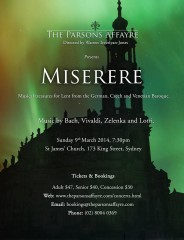
The Parsons Affayre
St James, King Street, Sydney
9 March 2014
Miserere – Music for Lent
The Parsons Affayre was formed in 2009 as an elite choral group, normally with two singers per part and specialising in Renaissance polyphony. Directed by Warren Trevelyan-Jones, a Lenten concert has become a regular feature of their calendar and the programme for this year’s concert comprised baroque music by composers from Germany and Venice. Since some of this music was written for double choirs the choral forces had to be doubled. A characteristic of the Parsons Affayre programming has been their exploration of lesser-known repertoire and that continued in this Lenten concert with two Australian premiere performances.
The first half of the concert consisted of the Miserere in D minor (ZWV 56) by Jan Dismas Zelenka who was working at the Dresden Hofkirche when it was written. Born in Bohemia, Zelenka spent most of his life north of the Alps, but he probably visited Venice and seems to have been strongly influenced by Venetian musical styles. This Miserere is an amalgam of Germanic solidity and characteristically Venetian polychoral sonorities. It may also owe something to the music of Heinrich Schütz who had previously worked at Dresden and was also influenced by Venetian music. The Miserere has only recently been revived and this performance was one of the first in modern times and the first in Australia.
The augmented choir made a splendid sound in the rich acoustic of St James with 17 individually strong voices with a notably robust tenor section. Their well blended singing was accurate, disciplined and well balanced. The initial sonic impact was enhanced by the rich sound of the instrumental group of 16 whose string and sackbut players used period instruments while the oboes and bassoon were modern. The strong toned sackbuts dominated the musical texture in the Zelenka and in the resonant acoustic of St James often seemed relentlessly loud and somewhat unvaried. There were times when a greater degree of tonal and dynamic variety would have been welcome.
The second half of the programme started with the first Australian performance of the complete Credo in G minor by Antonio Lotti, who was born in northern Germany but spent most of his life in Venice. The work is written for two choirs in the typical Venetian manner and displays more variety of texture and dynamics than the Zelenka Miserere. The choir gave a splendid performance, especially of the crunching dissonances in the Crucifixus movement which is sometimes sung on its own.
The concert continued with Bach’s cantata Christ lag in Todesbanden (BWV 4) which gave the soloists greater exposure. Throughout the concert the soloists were drawn from the choir and again demonstrated what a fine body of singers Trevelyan-Jones has assembled. Soprano Kim Dover produces a beautifully pure and clear, resonant sound, particularly at the top of her range. Her decorated singing of the Gloria Patri in the Vivaldi at the end of the concert was delightful. Alto Jenny Duck-Chong sang with a warm sound that blended well with the other soloists, especially with Natalie Shea in their brief duet in the Lotti. Tenor Andrei Laptev’s voice was strongly projected and he provided some fine florid singing in the Zelinka. Bass Nick Gilbert blended well in the ensembles and bass Simon Turnill, who sang only in the Bach, produced sensitive phrasing and a very attractive tone.
The published programme ended with Vivaldi’s Domine ad adiuvandum me festina for two antiphonally placed choirs and orchestras. Here the two divided choirs reaffirmed their strengths even with half their numbers. The instrumentalists were also divided and since there was only one cello and one double bass they went respectively to the first and second orchestras. This was a nice touch because the greater sonority of the double bass in the second orchestra helped to subtly differentiate the sound of the two orchestras.
As an encore the combined forces performed another (much shorter) Miserere by Zelenka. This was in the same style as the opening work on the programme and ended the concert in a suitably rousing manner.
Throughout the evening Warren Trevelyan-Jones was fully in control of his forces and gave clear directions which maintained unanimity of purpose. The orchestra provided strong and reliable support throughout the programme and special mention should be made of some sensitive solo cello playing by Noeleen Wright.
Easter is a musically productive time of the year and this Lenten concert once again demonstrated the high level of music-making that regularly emerges from St James’ King Street.
Warren Trevelyan-Jones will be directing the Choir and Orchestra of St James’ in a programme of music by Bach and Handel at the church on Saturday 22 March.
Larry Turner for SoundsLikeSydney©
Larry Turner has been singing in choirs for many years – both in Sydney and London. He is an avid attender of operas and concerts, with an emphasis on vocal music. He particularly enjoys music from both the great a capella period and the baroque – especially the lesser-known works of Bach and Handel. He has written programme notes for Sydney Philharmonia, the Intervarsity Choral Festival and the Sydneian Bach Choir and is currently part of a team researching the history of Sydney Philharmonia for its forthcoming centenary.


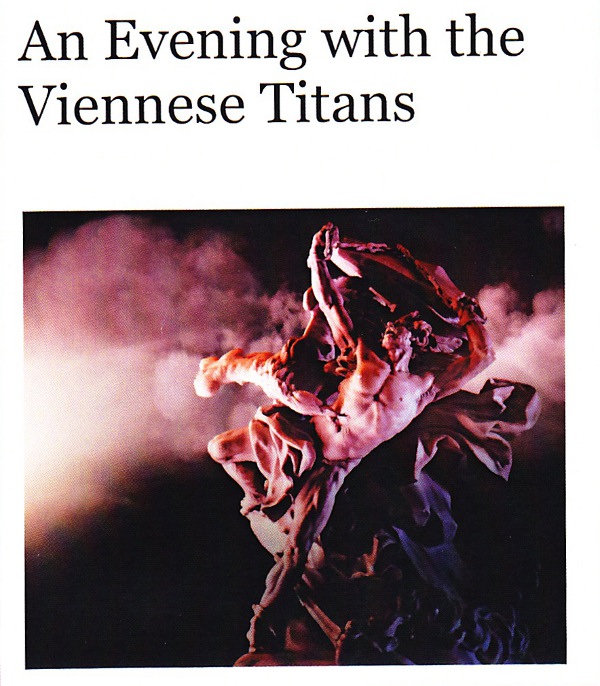
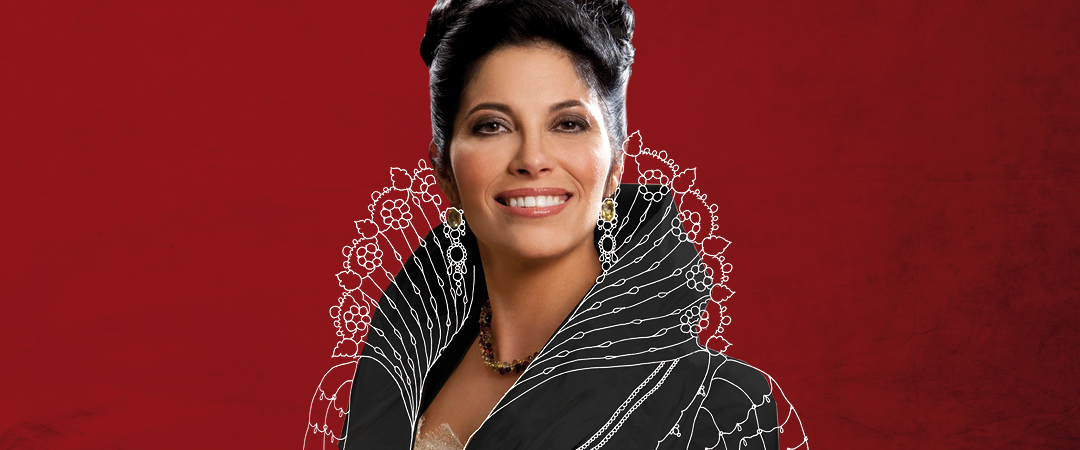

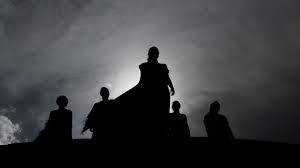

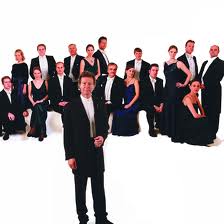
One Comment